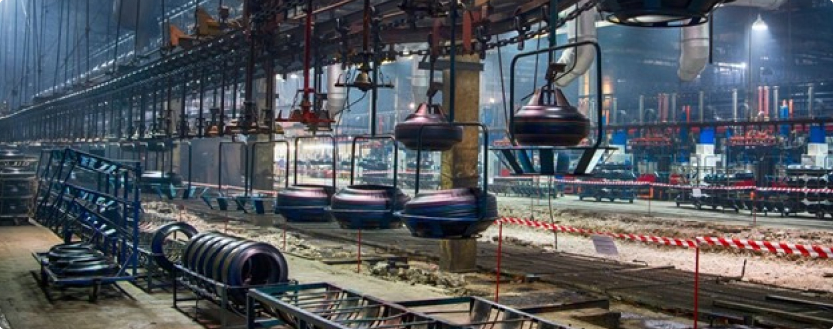The earliest forms of wheeled transportation date back to ancient civilizations like Mesopotamia, where wooden wheels were used on carts for transporting goods. However, these early wheels were not very durable, and they often broke down or wore out quickly. The concept of a pneumatic tyre was first developed in the early 19th century by Scottish inventor John Boyd Dunlop.
In 1888, Dunlop's son was experiencing discomfort while riding his tricycle on rough, unpaved roads. To address this problem, Dunlop developed a tyre made of rubber and filled with air. This pneumatic tyre offered a smoother ride and improved durability compared to earlier solid rubber tyres.
II. Radial Tyres
The next major development in tyre technology came with the introduction of radial tyres in the 1940s. Before radial tyres, most tyres were bias-ply tyres, which had plies that were laid diagonally across the tyre's carcass. While bias-ply tyres were durable and inexpensive, they had significant drawbacks, such as poor handling and a rough ride.
Michelin, the French tyre company, was the first to introduce radial tyres, which featured plies that ran perpendicular to the tyre's circumference. This design provided a more flexible sidewall and improved handling and ride comfort. Radial tyres also had improved grip and traction, making them ideal for high-performance vehicles.

III. Tyre Manufacturing Techniques
As tyre technology evolved, so did the manufacturing techniques used to produce them. Early tyres were made using natural rubber, which was harvested from rubber trees and processed into rubber sheets. These sheets were then cut and assembled into tyres using a combination of adhesives and stitching.
In the 20th century, synthetic rubber was developed, which allowed for more consistent and reliable tyre production. New manufacturing techniques, such as vulcanization and extrusion, were also developed, which allowed for greater precision and control in the production process. Today, tyres are produced using a combination of natural and synthetic rubber, along with other materials like steel, polyester, and nylon.
IV. The Future of Tyre Technology
In recent years, tyre technology has continued to evolve, with a focus on improving performance, safety, and environmental sustainability. One area of innovation is the development of smart tyres, which use sensors to monitor tyre pressure, temperature, and wear in real-time. This information can be transmitted to the vehicle's onboard computer, allowing for more precise monitoring of tyre performance and maintenance needs. Another area of innovation is the use of nanotechnology in tyre manufacturing, which can improve tyre durability and performance while reducing rolling resistance and fuel consumption.
In addition to the development of smart tyres and the use of nanotechnology, there are other areas of tyre technology that are being explored. For example, researchers are experimenting with the use of sustainable materials in tyre production, such as natural rubber alternatives derived from plants like guayule and dandelions. These materials offer several advantages over traditional rubber, including improved environmental sustainability and reduced dependence on non-renewable resources.
An exciting area of research in tyre technology is the development of self-healing tyres that use materials capable of repairing themselves when damaged. This innovation holds the potential to significantly decrease the number of required tyre replacements, reducing waste and promoting overall sustainability. Moreover, researchers are currently investigating the use of 3D printing technology in tyre production, which could provide increased flexibility and customization in the design and manufacturing of tyres.

V. Environmental Impact:
As tire technology has evolved, so has our understanding of the environmental impact of tire production and disposal. Old tires can be a significant source of pollution, as they can release harmful chemicals and gases into the environment if not disposed of properly. To address this problem, many tire manufacturers now incorporate recycled materials into their production process and offer tire recycling programs to reduce waste. By recycling old tires, these programs help to reduce the amount of waste that goes into landfills and minimize the pollution caused by tire disposal. In addition, some tire manufacturers are working on developing eco-friendly materials that can be used in tire production, which could help to further reduce the environmental impact of the tire industry.
In conclusion, the evolution of tyre technology has been driven by a desire for improved safety, performance, and durability throughout history. From the earliest wooden wheels to the latest high-performance radial tyres, tyre technology has come a long way and continues to evolve. As we look to the future, tyre manufacturers will need to balance the competing demands of performance, safety, and sustainability to meet the needs of both drivers and the environment.